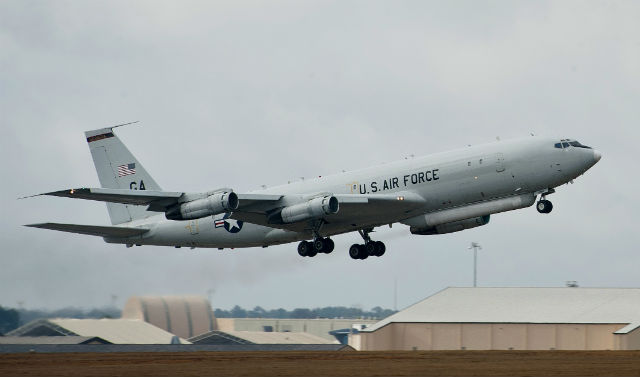The US Air Force has taken the first step in a newly revealed, eight-year process to develop and field a business jet-sized replacement for the Northrop Grumman E-8C joint surveillance target attack radar system (JSTARS), although the project still has no approved funding.
The JSTARS Recapitalisation (Recap) programme seeks to achieve an initial operational capability in 2022 with a “more efficient airframe” in the business jet class. It will be acquired using separate contracts for developing the aircraft, the airborne sensor, battle management command and control (BMC2) system and a communications subsystem.
The USAF revealed the strategy in a request for information to suppliers interested in bidding for the BMC2 system. The document was posted online on 23 January by the Air Force Lifecycle Management Center's electronic systems division at Hanscom AFB, Massachusetts.
Missing from the document is any indication of the programme’s funding status. The USAF budget request for the fiscal year 2014 budget did not include any line items entitled “JSTARS Recap”, nor did Congress add funding for such a project in the approved FY2014 omnibus appropriations bill that passed earlier this month.
But the release of the request for information on the new BMC2 system may indicate the USAF intends to request funding to launch the overall JSTARS Recap programme in FY2015. If funded, the project would create a rare opportunity for the aerospace industry to win a developmental contract, with several potential candidates available to compete.

US Air Force
In the last decade, Boeing and Raytheon have challenged Northrop’s position, proposing or fielding aircraft with ground moving target indication (GMTI) capability: the heart of the JSTARS mission. Raytheon delivered five Sentinel R1 surveillance aircraft to the UK, which modify the Bombardier Global Express business jet to carry a Raytheon/BAE Systems synthetic aperture radar with a GMTI mode. Boeing, meanwhile, proposed a variant of the 737-based P-8A anti-submarine and maritime patrol aircraft with a similar, Raytheon-built radar.
The JSTARS mission of detecting ground targets at long range at night or in poor weather evolved in the late 1980s. Northrop supplied recently modified Boeing 707s, which played a starring role in Operation Desert Storm in 1991, when the aircraft detected a major Iraqi troop movement in the midst of a seemingly blinding sandstorm.
Replacing or upgrading the 60-year-old aircraft which comprise the ground surveillance fleet of 16 E-8Cs has been debated since the USAF cancelled the Northrop E-10A multisensor command and control aircraft in 2007.
Northrop proposed to re-engine the E-8C with Pratt & Whitney JT8D-219 turbofan engines, as well as perform sensor and structural upgrades. Boeing countered by offering the aerial ground surveillance variant of the P-8A. But a 2011 analysis of alternatives funded by the USAF recommended a different strategy. The study urged replacing the E-8C with a mix of business jet-sized sensor platforms augmented by the Northrop RQ-4 Block 40 Global Hawk fleet – an unmanned air system that carries the multiplatform radar technology insertion programme radar.
A year later, Gen Norton Schwartz – the USAF's then-chief of staff – said in Congressional testimony that the service could not afford to carry out the recommendations from the analysis of alternatives. The USAF also at that time was unable to fund the modernisation programme for the E-8Cs.
A 30-year forecast of airpower capability released by the US Department of Defense last year assumed that the E-8C fleet would remain in place over the next three decades, although the USAF has acknowledged the aircraft need several upgrades to keep flying beyond 2025.
The USAF’s stance appeared to shift dramatically last September, however. Gen Mark Welsh, who replaced Schwartz, signalled that replacing the E-8C has become a priority. In comments to reporters at the Air Force Association’s annual convention, Welsh identified the business jet-sized E-8C replacement as the service’s next-highest priority, after acquiring the Lockheed Martin F-35A, Boeing KC-46 tanker and developing a future long-range strike bomber.
But Welsh so far has not disclosed how the E-8C replacement project will be funded. The FY2015 budget request, which is still being assembled, is likely to have a lower top-line than this year’s enacted level, meaning that the USAF will have to pay for such a programme by taking funding away from another one.
Source: Flight International









































